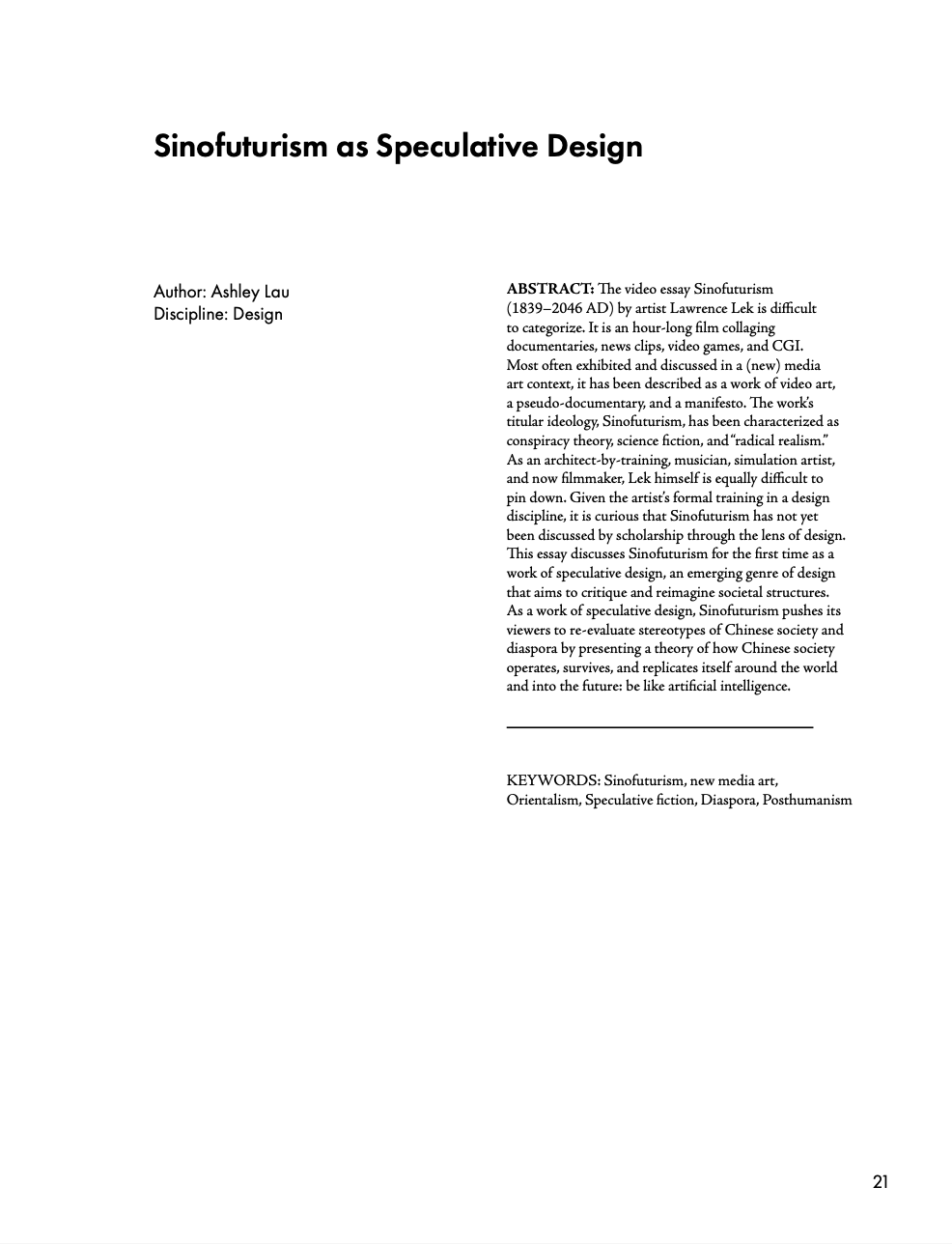Sinofuturism as Speculative Design
DOI:
https://doi.org/10.29173/crossings158Keywords:
Sinofuturism, Orientalism, New Media Art, Speculative fiction, Posthumanism, DiasporaAbstract
The video essay Sinofuturism (1839–2046 AD) by artist Lawrence Lek is difficult to categorize. It is an hour-long film collaging documentaries, news clips, video games, and CGI. Most often exhibited and discussed in a (new) media art context, it has been described as a work of video art, a pseudo-documentary, and a manifesto. The work’s titular ideology, Sinofuturism, has been characterized as conspiracy theory, science fiction, and “radical realism.” As an architect-by-training, musician, simulation artist, and now filmmaker, Lek himself is equally difficult to pin down. Given the artist’s formal training in a design discipline, it is curious that Sinofuturism has not yet been discussed by scholarship through the lens of design. This essay discusses Sinofuturism for the first time as a work of speculative design, an emerging genre of design that aims to critique and reimagine societal structures. As a work of speculative design, Sinofuturism pushes its viewers to re-evaluate stereotypes of Chinese society and diaspora by presenting a theory of how Chinese society operates, survives, and replicates itself around the world and into the future: be like artificial intelligence.

Downloads
Published
Issue
Section
License
Copyright (c) 2023 Ashley Lau

This work is licensed under a Creative Commons Attribution 4.0 International License.

